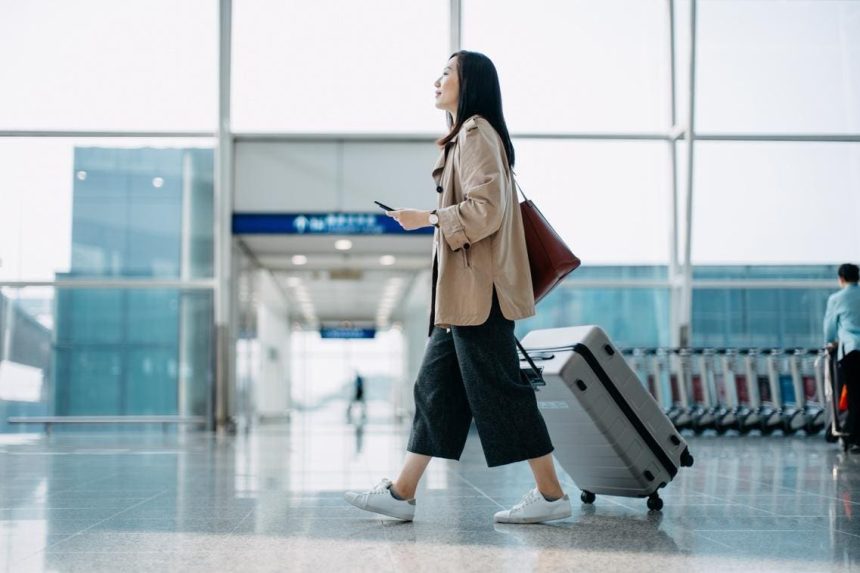Michael Zeto is Boingo Wireless Chief Commercial Officer, responsible for driving growth and innovation across 5G, CBRS, wireless and IoT.
Air travel surpassed pre-pandemic numbers earlier this summer as the demand for flights soared. In June, the TSA made history, screening the most passengers ever in a single day.
After facing unprecedented challenges during the Covid-19 pandemic, the aviation industry has made a comeback, witnessing a surge in both passenger numbers and flights. As the chief commercial officer of a company that designs, builds and manages next generation wireless networks at airports and large venues, I’ve had a front-row seat to this innovation. There are five valuable lessons every business can learn from this recovery. Let’s explore them.
1. Adaptability and resilience are key.
Airports faced numerous obstacles, including travel restrictions, reduced passenger volume and the need for enhanced health and safety protocols. In response, airports swiftly adapted their operations to meet new requirements and reestablish passenger confidence. Touchless experiences became table stakes. To minimize contact points, many airports adopted self-check-in kiosks, biometric authentication, self-service payment systems and more.
Flexibility was key. Adapting to changing circumstances is vital to any business’ survival. Resilient companies pivot when needed and are not afraid to reevaluate business models, explore new revenue streams and implement technology-driven solutions. These can be the necessary steps to turn headwinds into tailwinds.
2. Prioritize digital transformation.
The digital transformation of airports played a crucial role in helping them navigate the pandemic and effectively handle recent surges in passenger traffic. Airport CIOs prioritized digital platforms, mobile applications and intelligent data to streamline processes, improve the passenger experience and reduce the reliance on manual resources. This strategic foresight allowed airports to remain resilient and positioned for long-term success.
Similar to sustained changes to the travel industry after 9/11, the technology solutions and safety measures airports implemented during the pandemic are becoming the industry standards for the future.
Businesses that focus on innovation can be equipped with the tools and capabilities to navigate changing customer expectations and disruptive market forces. Digital innovation also benefits the bottom line, with a report from Deloitte finding that digital transformation can generate up to $1.25 trillion in new value.
3. Pay attention to infrastructure and bandwidth.
Digital transformation is not possible without robust wireless networks. Throughout the pandemic, airports relied on 5G and Wi-Fi 6 to offer fast and reliable connectivity, allowing passengers to access real-time updates on travel requirements, flight schedules and health protocols. (Disclosure: My company helps deploy 5G and Wi-Fi 6.) The high bandwidth and low latency of these technologies supported the implementation of Internet of Things (IoT) solutions such as contactless check-ins and virtual queuing systems, enhancing efficiencies and overall operational resilience.
Private 5G—which is a nonpublic wireless network restricted to specific users—also emerged as a secure communications network solution for facilitating sensitive airport operations and data. It allows airports to implement technologies like robotics, autonomous vehicles, and smart systems for baggage handling, security and maintenance.
Upgrading network infrastructure is essential to future-proofing a business. As the digital landscape continues to evolve, businesses need infrastructure that can handle increasing data demands, cloud-based services, a growing number of connected devices and IoT. It’s important for companies to consider solutions that deliver strong, secure network coverage and that meet their specific needs.
4. Take a customer-centric approach.
Airport employees understand that the customer experience begins long before a passenger boards the aircraft. They aim to deliver a seamless experience from the moment passengers arrive to the moment they leave—from baggage drop-off to check-in to security to boarding and departure. Customers are at the center of all operations.
Businesses can learn from airports’ customer-centric approach. Listen to customers and tailor products, services and processes to meet their needs effectively. Embrace technology to streamline operations and create efficiencies. Address evolving wants of customers, and be proactive in making change.
5. Collaborate.
The airport industry’s recovery has been fueled by collaboration. Airports, airlines and various stakeholders worked together amid many unknowns and rose to the challenge through innovation and a resilient spirit. Together they helped set safety guidelines, reprioritized projects and fast-tracked necessary technology deployments.
Create a culture of collaboration that enables your business to adapt to challenges and seize new opportunities. Diverse skill sets can respond to a variety of situations and adapt to new technologies, market shifts and customer demands. This mentality is crucial for staying competitive and navigating uncertainties.
Like airports, businesses across all sectors experience an ever-evolving environment where change is constant. To thrive, embrace change as an opportunity for growth and innovation.
Forbes Business Council is the foremost growth and networking organization for business owners and leaders. Do I qualify?
Read the full article here










